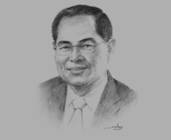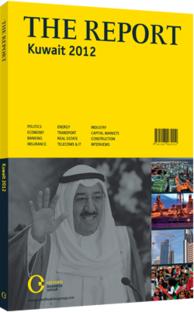OBG talks to Lim Hng Kiang, Minister of Trade and Industry for Singapore

Interview: Lim Hng Kiang
What can the GCC learn from Singapore’s economic development strategy?
LIM HNG KIANG: When Singapore became independent in 1965, our small domestic market meant we had to adopt an export-oriented strategy targeting the global market. We developed policies to attract large multinational corporations to Singapore, lowered our trade barriers to position ourselves as a regional trading hub and diversified our manufacturing base. Today, about 70% of our annual GDP comes from overseas exports. Firms based in Singapore can access the global market through Singapore’s extensive network of 18 free trade agreements (FTAs), 38 investment guarantee agreements and 74 avoidance of double taxation agreements. Singapore has emerged as one of the key manufacturing, financial, logistics and trading hubs in the Asia-Pacific region. We are also home to leading firms in the services sector, due in part to our ability to attract talent.
One of Singapore’s strengths is our focus on human resource development, an area drawing much interest from GCC countries. Going forward, there is potential to share more of our experience in e-government.
What can be done to facilitate the transfer of skills and experience from Singapore to the GCC?
LIM: As a country with limited resources, we have always advocated human resource development as a means for economic and social progress. In this regard, Singapore has a number of initiatives that facilitate the sharing of our development experience such as the Singapore Cooperation Programme. These initiatives include visit programmes, training programmes, advisory services and even project implementation. Where necessary, Singapore might also invite participation from relevant private sector and international organisations.
While Singapore is always keen to share her lessons and experiences with the GCC, it should be noted that we are still learning. Singapore certainly does not have the answers to everything. We welcome opportunities to also learn from the GCC to improve ourselves as well.
What do you think will be the main effects of the GCC-Singapore FTA (GSFTA)?
LIM: The GSFTA was a significant milestone when signed in December 2008. It was the GCC’s first-ever FTA and Singapore’s second FTA with the Middle East. The GSFTA covers not only trade in goods, but also includes trade in services, government procurement and bilateral cooperation in areas like electronic commerce and air services.
Trade between the GCC and Singapore has been growing at a healthy pace over the last 10 years and reached S$43.6bn ($34.67bn) in 2010. When the GSFTA comes into force, the flow of goods, services, investment and people between the economies will increase further. We have seen this with other FTAs and look forward to strengthening economic ties with the GCC.
How do you think South-east Asian involvement will develop in the region’s markets?
LIM: The Arab world’s potential market demand growth creates many opportunities for companies in Southeast Asia and the Arab world to further expand into each other’s regions. We in ASEAN and the GCC have been deepening our relations, most recently by exploring further trade and investment opportunities under the ASEAN-GCC Two-Year Action Plan (2010-12), including areas on trade and investment; economic and development cooperation; and education and culture. Both regions are also exploring more cooperation in financial and banking services, an area where deeper cooperation between the two regions would bring positive benefits to the people.
In addition, there is scope to expand relations through cooperation between the respective chambers of commerce or through events such as business forums.
These platforms will enable businesspeople from both ASEAN and the GCC to better access one another’s networks and further enhance cooperation and collaboration. Fostering such relations will also help enhance personal links, an integral part of a lasting relationship.
You have reached the limit of premium articles you can view for free.
Choose from the options below to purchase print or digital editions of our Reports. You can also purchase a website subscription giving you unlimited access to all of our Reports online for 12 months.
If you have already purchased this Report or have a website subscription, please login to continue.

